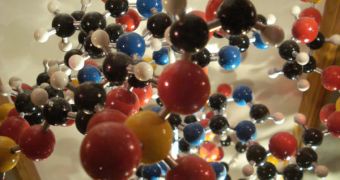In a recent scientific study, experts from the University of Liverpool managed to discover and monitor how mirror-image molecules interact and gain control over each other, dictating the physical state of superstructures in the process. The research was focused on “chiral,” or “different-handed” molecules, which are set apart from others through their inability to be superimposed onto their mirror image. A study accompanying the find appears in the latest issue of the respected journal Nature Chemistry.
Chirality is one of the most important aspects of molecules in chemicals, as they can dictate their function. For instance, the drug thalidomide can have a positive effect in patients, but its mirror image form can have devastating consequences. This class of molecules also includes proteins – which use just one mirror form of amino acids – and DNA, which only has one form of sugars. By reversing the chirality of a structure, experts can essentially alter its functions. The trait can also be theoretically used to assess the possibility of life existing on exoplanets.
Molecules are also known for their ability to form superstructures. For example, water can form snowflakes, which are superstructural arrangements of molecules. Comparatively, when chiral molecules assemble, they create chiral, or “handed” superstructures. What the UL science team essentially did was favor the formation of such constructs on a flat surface, and then observe the structures at the nanoscale, using advanced viewing techniques. The goal was to determine how superstructures containing molecules of both types of chirality “fought” each other, and how just one emerged dominant, and determined the chirality of the superstructure as a whole.
Investigations revealed that, when both types of molecules are presented in equal quantities, they each create a superstructure of their own, with considerably different properties from each other. However, when even the slightest imbalance exists, the dominant chirality creates a superstructure, while the others are simply left in disarray, and unable to create larger formations.
“We were surprised at these results. All perceived wisdom was that the left- and right-handed molecules would simply create their respective superstructures in quantities that reflected the molecular ratio – that is, we would observe proportional representation. Instead, what we obtained was a kind of 'molecular democracy' that worked on a 'first-past-the-post' system where the majority population wrested chiral control of the superstructures and the minority was left disorganized,” explains UL Surface Science Research Center expert professor Rasmita Raval.

 14 DAY TRIAL //
14 DAY TRIAL //